A Commitment to Technology
By Dag Pike

We live in a world where our lives are governed by technology. Smartphones, tablets, computers, and cars are our world of technology, but almost everything we do or get involved in these days is governed by the technology of one sort or another. When we look at our boats, technology is increasingly taking over where we used to rely on seamanship to find solutions. We are relying more and more on technology to keep us and the boat going.
Engines and propulsion rely almost entirely on the electronic systems now. I think most of us would find it hard to navigate without the range of electronic equipment fitted to our boats. Even our entertainment is governed by advanced technology.
I am not opposed to the advance of technology afloat. It can make life on board much easier, and dare I say it -- safer. What does concern me is that we are now starting to rely on technology, and we would find it hard to operate at sea without it. As we follow the march towards more technology, it would be good to stop and think about what happens if it lets you down.
When the technology goes wrong do you have backup systems to take over? Do you have a repair kit? Perhaps you just rely on your remaining technology to call for help to sort out the problem. If we are going to rely on technology in the way that we already do, then it is time that we started to look very carefully as to how we would cope if things go wrong.
Most of us do not put our boats under a lot of stress. This reduces the chance of failure. In trying to assess where we are heading in the future, as far as technology is concerned, I thought it would be a good idea to look at how lifeboats that go to sea to rescue people cope with advancing technology. Designing a lifeboat is a major challenge for the naval architect. The boat has to be able to survive in the worst weather conditions -- but it is more than just survival.
Changing Technology
A lifeboat has to have something left over to help others who are in distress in extreme conditions. Lifeboats tend to be slow to adopt new technology, and they mainly look for the tried and true test solution to make the boats work. Reliability is paramount because it is the failure of a boat's system that is the root cause of most disasters.
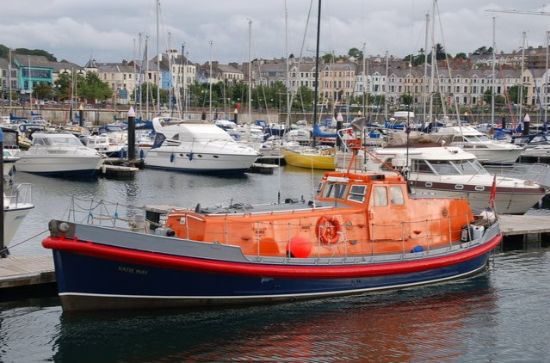
When the Norwegian Society for Sea Rescue (the NSSR) was looking for a new and more effective lifeboat design, they decided to adopt a different approach. The basic philosophy of this approach was “How can we harness the latest technology to make our lifeboats better?” The result is the fastest lifeboat in the world, with a top speed of over 40 knots and a design that makes a total commitment to technology.
They challenged experienced naval architect Evinde Amble to develop the new concept. The NSSR liked the concept that came out of the research and Peter Sundt put up the money for the prototype to be built. The result is a lifeboat that has carried out over 70 rescues off the coast of Southern Norway in just a few weeks.
As Evinde Amble explains, “We aimed to use only tried and tested technology but to use this in a way that would take maximum advantage of existing systems and control. We wanted to create a lifeboat where the skipper would have everything at his fingertips, where he could use his skill and expertise to maximum advantage to add a whole new dimension to lifeboat operations.” The basic philosophy of this design is to provide the skipper with all the information he needs and full control of all the onboard systems.

This new Sundt Class lifeboat is based on a deep-vee hull with a deadrise of 20? Particular attention was paid to the bow area, where a fine entry is combined with spray rails and a chine line that gives the boat the ability to operate at high speed in severe conditions. Foam fendering is fitted all around the hull, sloping down and merging with the hull at the sides to give a smooth flow to the water coming away from the hull. The anchor is recessed into a hawsepipe so that there is no risk of it catching on a casualty.
Speed is Critical
Speed has become a vital factor in lifeboat work and this lifeboat is powered by twin MAN diesels, producing a total of 1470 KW. These engines are coupled to Kamewa water jets via a ZF gearbox. Waterjets were selected both for the shallow draft they offer and for the excellent maneuverability.
The design team felt that good maneuverability was the key to lifeboat effectiveness and safety and this boat is fitted with twin joystick controls and no steering wheel. One joystick is for low-speed operations up to around 10 knots and this combines the waterjets and the powerful 50 KW bow thruster in a ‘point and go’ system. The other joystick is used at higher speeds just for steering with the possibility of also engaging the autopilot.
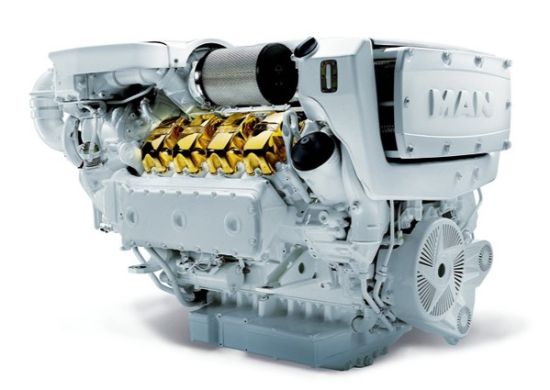
The control systems all have back-ups and there is considerable redundancy throughout the boat, particularly on the electronic side. In front of the two helm seats, there are four electronic displays. These are big-ship systems based on Furuno technology and the screens can be quickly switched to show a wide variety of information.
There are twin radars of the most advanced design, twin electronic chart displays and position fixing with both differential GPS and Loran C although the latter has now closed down on the Norwegian coast. Video cameras can display the aft deck so the skipper can monitor a boat being towed and he has control of the operation of the towing winch. Another camera is attached to the fire-fighting monitor, which is remotely controlled, and this enables the operator the target to fire precisely.
Communications are mainly through VHF radio systems but there is also high-speed internet access and mobile phone. A VHF direction finder is also carried.
For casualty recovery there is a hydraulic crane on the aft deck and a transom recovery platform. The boat is also equipped with advanced diving gear, including underwater communication systems and the crews are very highly trained to use this and the other equipment on board. This lifeboat is operated by a three-man fulltime crew which operates 28 days on and 28 days off and it is this high caliber crew that is the key to operating this high technology, fast lifeboat.
Getting the Job Done
On a trip to sea in this boat it was very impressive to see how they operate. We carried out two rescues on a five-hour trip, both boats with broken-down engines. The good maneuverability made picking up the tow an easy operation. Operating out in the open sea of the Skagerrak where a 1.5-meter swell was running the ride of the boat was very impressive. A ballast tank is fitted in the forward part of the hull to enable the trim to be adjusted in rough seas and the extra weight of this also helps to ballast the hull down when it is rough.
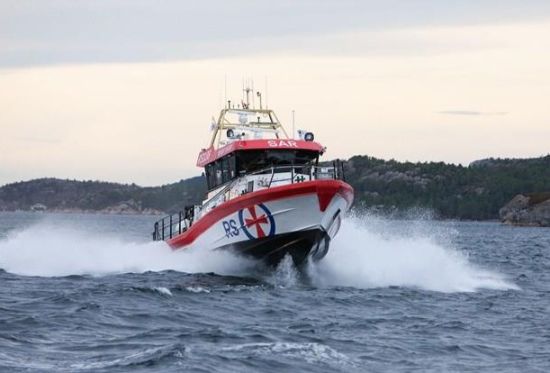
There are four sprung Recaro seats in the wheelhouse and these are fitted with seat belts to secure the crews in rough seas. Visibility from the helm is excellent and this was felt to be a very important factor in the design.
Some of the normal aspects of lifeboat design are missing from this new design. This boat is not self-righting, there is no double bottom and the engine compartment is not divided. “If we had fitted these extreme safety features, we would have compromised other aspects of the design,” said Amble. “There has never been a capsize of a Norwegian lifeboat, so self-righting was not considered necessary.”
Safety Factors
What are the lessons that could be learned from this new approach to lifeboat design for the leisure market? The approach and commitment to technology could make yachts much safer by reducing the risks so there is a need to build in redundancy.
I think one of the biggest factors for safety is the need for good all-round visibility from the helm and so many boats are poor in this respect. If there is to be precise human control, then being able to see what is going on is a vital component. This and good control are both important safety features that boats in the leisure sector could usefully copy.
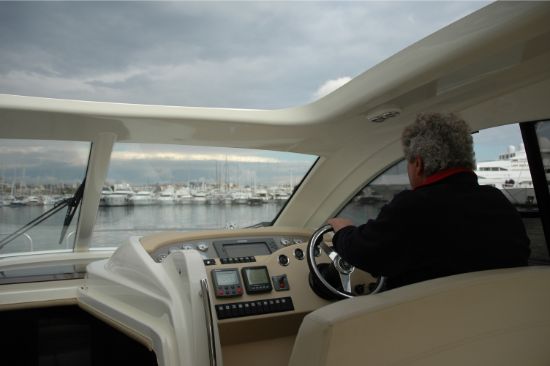
Comfort of the crew is another factor and you will not be paying attention to how the boat is performing and how the navigation is progressing if you are not comfortable at the helm. Seat belts to keep you secure against the movement of the boat are another factor and I know from personal experience how much having secure seat belts can allow you to relax without having to hold on all the time. You can’t concentrate on the lookout and the navigation if you have to hold on by your fingertips all the time.
Proper Use of Technology
Yachts have so much technology on board already, but it is not focused on how it can be used and on ease of use. Nobody seems to think about backup systems and how to cope if a system lets you down. Is there a backup and can it be used effectively? Can it be easily accessed in case you need it in a hurry? Look around your boat and see what you have and how it can be used and what needs backing up. Remember, when you are out at sea you have to cope with failure on your own.
You can have portable GPS units and portable VHF transceivers that do not rely on the boat’s power supply as a good back up to these vital services. Your fuel supply to the engines should be arranged so that either engine can operate from either fuel tank or both engines from one tank.
It is the same with the vital electrical system and it should be possible to operate both engines from one battery bank or the other. These may be small things but they can produce a vital increase in safety levels if things do not work out as planned. It is these things that make you realize just how much you are relying on technology.
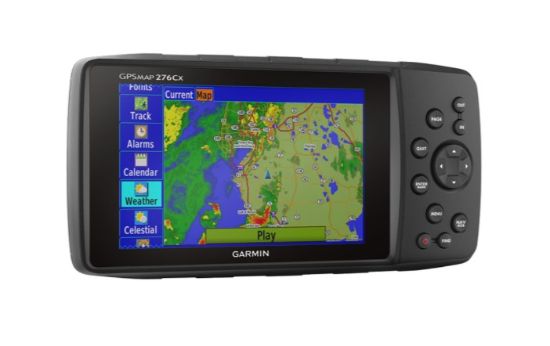
Yacht designers might argue that yacht owners and skippers do not have the experience to operate the level of technology that I found on that advanced lifeboat but rather than blame the skipper they should think a lot more about what is installed and equally important how it is installed. And it is not just the yacht designers. The equipment manufacturers have a big part to play here and you often get the impression that they do not have the seagoing experience to make their equipment functional and easy to use.
The British Navy has banned touch screen technology because it is a risk to navigation competence, and I would like to see yachts follow suit. Some electronics are just too clever for their own good. At the end of the day, I begin to realize that the real problems stem from designers, builders and dare I say it, the skippers and crews for not making the necessary commitment to the technology and so the systems and the way they are installed are not user-friendly and designed for easy use.